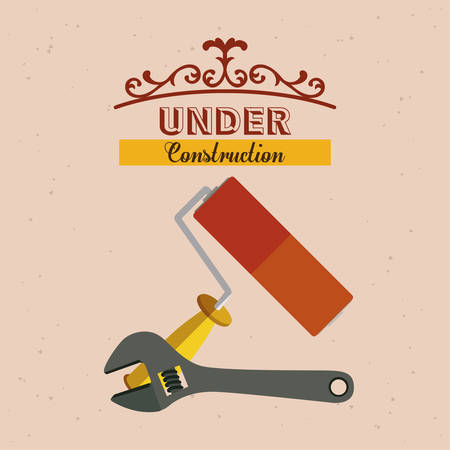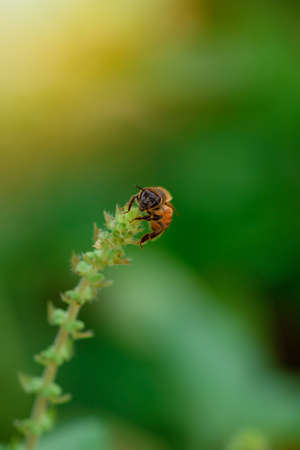Common Household Pests in the United States
American homes are often visited by a wide variety of pests. Understanding which pests are most common and the risks they pose to your health and property is the first step toward protecting your family and your investment. In this section, we’ll break down the most prevalent household pests across the U.S., ranging from insects and rodents to other critters you might not expect.
Insects: Unwelcome Guests
Some of the most frequent invaders are insects. They can slip through tiny cracks, hitch a ride on groceries or packages, and quickly multiply if not addressed. Here’s a quick look at some of the main culprits:
| Type | Description | Main Risks |
|---|---|---|
| Cockroaches | Nocturnal bugs that hide in kitchens, bathrooms, and basements | Trigger allergies, contaminate food, spread bacteria like Salmonella |
| Ants | Enter homes in search of food; some build colonies inside walls | Food contamination, structural damage (especially carpenter ants) |
| Termites | Silent destroyers that feed on wood structures | Severe property damage that can be costly to repair |
| Bed Bugs | Tiny insects that feed on human blood at night | Bites cause itching, sleeplessness, and stress; difficult to eradicate |
| Fleas & Ticks | Often brought in by pets; survive in carpets and bedding | Can transmit diseases like Lyme disease (ticks) and tapeworms (fleas) |
Rodents: More Than Just a Nuisance
Mice and rats are notorious for sneaking into American homes, especially during colder months. Their ability to chew through wires, insulation, and even drywall makes them especially troublesome.
| Rodent Type | Description | Main Risks |
|---|---|---|
| House Mouse | Small gray-brown rodent commonly found indoors year-round | Contaminates food, chews wiring (fire risk), spreads diseases like Hantavirus |
| Norway Rat & Roof Rat | Larger rodents found in basements or attics depending on species | Property damage, disease transmission (Leptospirosis, Salmonella) |
Other Critters You Might Encounter
Squirrels & Raccoons
Squirrels may seem cute but can cause significant damage if they nest in attics. Raccoons are smart and strong enough to get into trash cans or even break into attics looking for shelter.
Main Risks:
- Squirrels: Chewing on electrical wiring, creating fire hazards, damaging insulation.
- Raccoons: Spreading diseases such as rabies, damaging roofs or siding during entry.
Spiders & Scorpions (Regional Concerns)
Certain spiders like black widows or brown recluses carry venom that can be harmful to humans. Scorpions are more common in the Southwest but can make their way indoors as well.
Main Risks:
- Bites or stings can require medical attention for sensitive individuals or children.
No matter where you live in the U.S., understanding these common household pests helps you recognize warning signs early and take steps to minimize health risks and property damage.
2. Health Hazards Associated with Pests
How Pests Impact Human Health
Pests are more than just a nuisance; they can pose serious threats to your health and well-being. Different types of pests, such as rodents, cockroaches, mosquitoes, and bed bugs, can directly or indirectly affect the health of you and your family. Understanding these risks helps you take proactive steps in protecting your home and loved ones.
Common Health Issues Caused by Pests
| Pest Type | Health Hazard | Examples of Risks |
|---|---|---|
| Cockroaches | Allergies & Asthma | Triggering asthma attacks, especially in children; causing allergic reactions from droppings and shed skin |
| Rodents (Mice & Rats) | Disease Transmission | Spreading diseases like Hantavirus, Salmonella, and Leptospirosis through droppings and urine |
| Mosquitoes | Virus Spread | Carrying West Nile Virus, Zika Virus, and other mosquito-borne illnesses through bites |
| Ticks | Bacterial Infections | Transmitting Lyme disease and Rocky Mountain spotted fever after attaching to skin for a blood meal |
| Bed Bugs | Bites & Skin Irritation | Causing itchy welts, allergic reactions, and secondary infections from scratching bites |
| Fleas | Bites & Disease Vector | Biting humans and pets; spreading diseases like Murine typhus and tapeworms |
| Stinging Insects (Bees, Wasps) | Bites & Allergic Reactions | Painful stings; risk of severe allergic reactions (anaphylaxis) in sensitive individuals |
The Hidden Dangers: Allergens and Disease Vectors
Pest allergens are often hidden in dust or the air inside your home. Cockroach droppings, rodent hair, and shed insect skins can trigger allergic reactions without you even seeing the pests. Meanwhile, some pests are effective vectors for diseases. Mosquitoes need only a small amount of standing water to breed and multiply rapidly, increasing the risk of disease outbreaks during warm months.
Key Takeaways for American Households:
- Avoid exposure to pest droppings, urine, or nesting materials whenever possible.
- Keep an eye out for unexplained bites or allergy symptoms that could be linked to hidden pest infestations.
- If someone in your household has asthma or severe allergies, regular pest control is especially important.
- Reduce mosquito breeding grounds by emptying standing water around your yard.
- If you suspect a tick bite or experience flu-like symptoms after spending time outdoors, consult a healthcare provider promptly.

3. Structural and Property Damage
Pests aren’t just a nuisance—they can cause serious damage to your home and belongings. Understanding the ways pests can impact your property is key to protecting your investment and maintaining a safe living environment.
How Pests Damage Your Home
Certain pests, such as termites, rodents, and carpenter ants, are notorious for attacking the very structure of your home. They can chew through wood, insulation, and even electrical wiring, often causing expensive repairs or hazardous conditions.
Common Types of Property Damage Caused by Pests
| Pest Type | Type of Damage | Areas at Risk |
|---|---|---|
| Termites | Eat wooden beams and flooring, weakening structural integrity | Walls, foundations, support beams |
| Rodents (mice & rats) | Gnaw on wires (fire risk), insulation, and personal belongings | Attics, basements, kitchens, garages |
| Carpenter Ants | Tunnel through wood to build nests, damaging wooden structures | Decks, window frames, support joists |
| Squirrels & Raccoons | Tear up roofing materials and insulation to create nests | Attics, crawl spaces, rooflines |
| Cockroaches & Silverfish | Destroy paper products, clothing, and contaminate food storage areas | Kitchens, closets, storage rooms |
The Hidden Costs of Pest Damage
Many homeowners don’t realize the extent of pest-related damage until it’s too late. For example, damaged wiring from rodents can spark electrical fires. Termite infestations may go unnoticed for years while silently destroying load-bearing walls. Repairing these problems often involves significant time and money—far more than regular prevention or early intervention would cost.
Why Early Detection Matters
The sooner you identify pest activity in your home, the better chance you have at minimizing costly repairs. Regular inspections and prompt action when signs of pests are detected can help protect your home’s value and ensure the safety of everyone living there.
4. Warning Signs of Infestation
Early detection of pests is essential for protecting your health and property. Pests like termites, rodents, cockroaches, and ants can cause significant damage before you even realize they’re there. Recognizing the warning signs allows homeowners to take action quickly and minimize costly repairs or health risks. Here are some of the most common indicators of a potential pest infestation:
Common Signs to Watch For
| Pest Type | Warning Signs | Potential Damage |
|---|---|---|
| Termites | Mud tubes on walls or foundation, hollow-sounding wood, discarded wings near windowsills | Structural wood damage, weakened support beams |
| Rodents (Mice & Rats) | Droppings in cupboards or along baseboards, gnaw marks on food packaging, scratching noises at night | Chewed wires (fire hazard), contaminated food, spread of disease |
| Cockroaches | Egg cases (oothecae), musty odor, droppings that look like coffee grounds or black pepper | Allergy triggers, bacteria spread to surfaces and food |
| Ants | Trails leading to food sources, small piles of dirt or sand indoors, visible nests outside near foundation | Food contamination, potential for structural damage (carpenter ants) |
| Bed Bugs | Tiny blood stains on sheets, itchy bites in a line or cluster, shed skins in mattress seams | Bite reactions, insomnia, emotional stress |
| Squirrels & Other Wildlife | Noises in attic or walls during daytime, damaged vents or shingles, nesting material in hidden areas | Insulation destruction, electrical hazards from chewed wires |
Physical Evidence Around Your Home
- Nests: Look for shredded paper, fabric, or insulation piled up in corners of attics or garages.
- Tracks & Marks: Greasy marks along baseboards and wall edges may indicate rodent activity.
- Unusual Smells: A persistent musty or oily odor can signal hidden pest colonies.
- Noises: Listen for rustling, scratching, or scurrying sounds within walls—especially at night.
- Bite Marks: Small chew marks on food packages or wood trim often point to rodent problems.
- Pest Sightings: Even spotting one cockroach during the day may mean many more are hiding.
Why Early Detection Matters
The sooner you spot these warning signs, the easier it is to control pests before they become a major problem. Regularly inspect key areas such as basements, attics, kitchens, and around foundations. If you notice any of the above indicators—or if something just seems off—it’s wise to reach out to a local pest management professional for an inspection. Prompt action not only helps protect your home’s structure but also keeps your family healthy and safe from the risks pests bring.
5. Prevention Tips and Best Practices
Routine Home Maintenance
Keeping pests out starts with regular home maintenance. Inspect your house for cracks, gaps, or holes in the foundation, siding, and around windows and doors. Seal these entry points with caulk or weatherstripping to prevent insects and rodents from sneaking inside. Check screens on windows and doors for tears, and repair or replace as needed.
Sanitation Strategies
Pests are attracted to food, water, and shelter. Reduce their appeal by maintaining a clean environment both inside and outside your home. Store all food in airtight containers, quickly clean up crumbs or spills, and take out the trash regularly. Don’t forget pet food—store it securely and avoid leaving it out overnight. Fix leaky faucets or pipes to eliminate water sources that can attract pests like cockroaches and termites.
Sanitation Checklist
| Area | Action |
|---|---|
| Kitchen | Wipe counters daily, sweep floors, store food in sealed containers |
| Bathroom | Fix leaks, keep drains clean, ventilate to reduce moisture |
| Garage/Basement | Declutter, store items off the floor, check for signs of pests |
| Outdoor Trash | Use bins with tight-fitting lids, clean regularly |
Landscaping Measures
Your yard is the first line of defense against many common American pests. Trim tree branches and shrubs away from your house to remove bridges that pests can use to access your home. Keep grass mowed and remove leaf litter or debris piles where insects and rodents can hide. Avoid stacking firewood against the house—store it at least 20 feet away if possible.
Yard Maintenance Tips
- Clean gutters regularly to prevent standing water and nesting sites.
- Direct downspouts away from your foundation.
- Remove weeds and overgrown vegetation near the home.
- Install outdoor lighting away from doors to reduce insect attraction.
Pest-Resistant Habits for Homeowners
The habits you build into your routine make a big difference in pest prevention. Be mindful when bringing packages or groceries inside; inspect them for hitchhiking bugs. Avoid leaving doors open unnecessarily, especially during warm months when pests are most active. If you have pets that go outdoors, check them regularly for fleas or ticks before they come back inside.
When to Call a Professional
If you notice signs of an infestation—such as droppings, gnawed wires, or frequent sightings of pests—it may be time to call a licensed pest control professional for an inspection and customized treatment plan tailored to your region’s needs.
6. When to Call a Professional Exterminator
Spotting the Signs: When DIY Isnt Enough
While some minor pest problems can be managed with over-the-counter solutions or preventive steps, certain situations require the expertise of a licensed professional. Ignoring or underestimating pest issues can put your health and property at risk, especially with pests common in American homes such as termites, cockroaches, rodents, and bed bugs.
Key Indicators That You Need Expert Help
| Pest Situation | Why You Need a Pro |
|---|---|
| Recurring infestations | If pests keep coming back despite your efforts, theres likely a hidden source or entry point only professionals can identify and treat. |
| Structural damage (e.g., termite activity) | Visible damage to wood, sagging floors, or hollow-sounding walls may mean termites are compromising your home’s safety. |
| Health risks (e.g., rodent droppings, cockroach allergens) | Pest waste can trigger allergies or spread disease; prompt removal is critical for family health. |
| Larger infestations (multiple rooms affected) | A widespread problem often indicates nests or colonies that require specialized equipment and strategies to eliminate. |
| Unidentified pests | When you’re unsure what you’re dealing with, pros have the training to identify and properly target the invader. |
How to Choose a Licensed Pest Control Service in the U.S.
- Check Credentials: Always ask for proof of licensing from state regulatory agencies. In most states, pest control companies must be licensed and technicians certified.
- Ask About Insurance: Make sure they carry liability insurance to protect your property during treatment.
- Read Reviews: Look up company ratings on platforms like Google, Yelp, or the Better Business Bureau to see what local customers say about their services.
- Request an Inspection: Reputable exterminators will assess your situation before quoting a price. Ask about inspection fees and whether they’re credited toward treatment costs.
- Understand Treatment Plans: Get details on chemicals used, safety precautions, and follow-up visits. A good provider will answer your questions clearly and provide written estimates.
- Look for Guarantees: Many companies offer service guarantees or free follow-up treatments if pests return within a set period.
Your Health and Home Matter
If you notice the warning signs listed above or just aren’t sure how serious your pest problem is, don’t wait—calling a professional early can save time, money, and stress while keeping your household safe from potential risks associated with pests.


